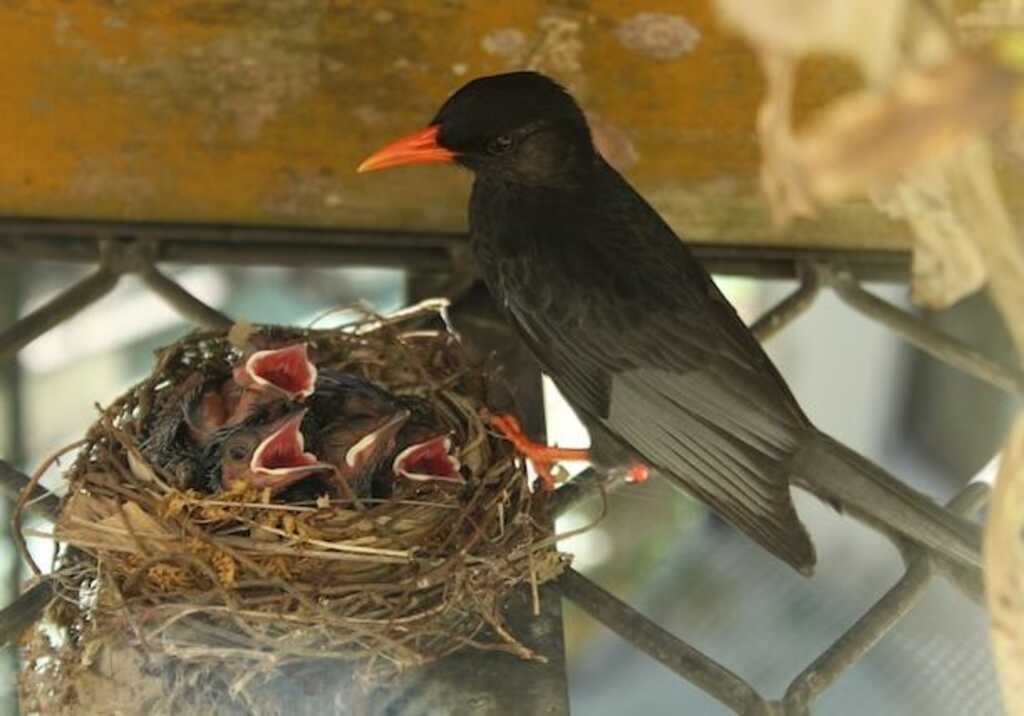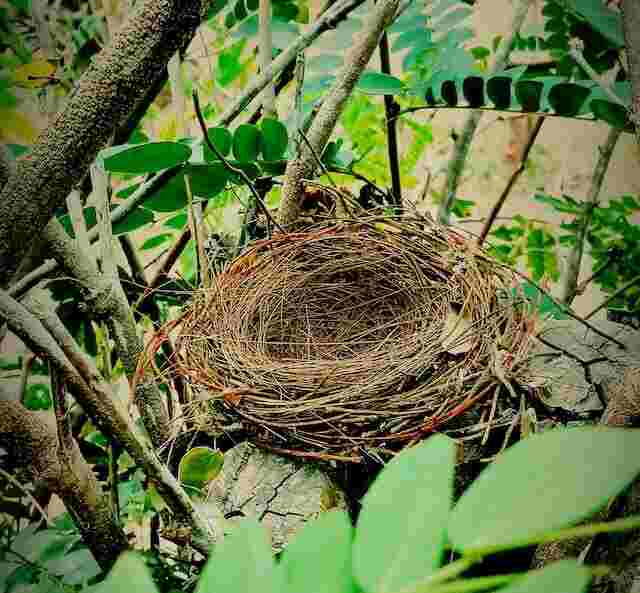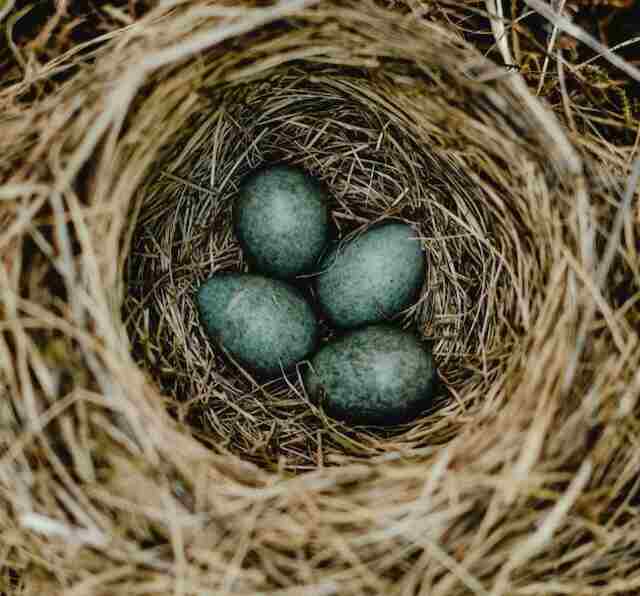Birds are beautiful creatures that add life and color to our surroundings. However, when they start building nests in unwanted areas, they can cause inconvenience and even pose safety hazards. Prevention is key when it comes to bird nest management.
In this guide, we’ll explore effective bird control methods, deterrents for bird nests, bird-proofing techniques, and bird nest removal tips to help you keep your home or business bird-free. Let’s dive in!
Table of Contents
- 1 Key Takeaways:
- 2 How To Keep Birds From Building Nests?
- 3 Understanding Bird Nesting Habits
- 4 Identifying Problem Areas
- 5 Implementing Physical Deterrents
- 6 Using Visual and Auditory Deterrents
- 7 Creating an Unattractive Environment
- 8 Repellents and Sprays
- 9 Hiring Professional Bird Control Services
- 10 Legal Considerations and Bird Conservation
- 11 Monitoring and Maintenance
- 12 Conclusion
- 13 FAQs: How To Keep Birds From Building Nests?
- 13.1 Why is it important to prevent birds from building nests?
- 13.2 What are some effective methods for bird nest prevention?
- 13.3 Are there any legal considerations when it comes to bird nest prevention?
- 13.4 Do professional bird control services offer effective solutions for bird nest prevention?
- 13.5 How often should I monitor and maintain my bird nest prevention efforts?
- 14 Author
Key Takeaways:
- Prevention is key in bird nest management.
- Identifying problem areas like under carports, in potted plants, on porch columns, near outdoor lights, under decks, and on window sills is crucial to effective prevention.
- Physical and visual deterrents, creating an unattractive environment, using repellents and sprays, and hiring professional bird control services are all effective strategies.
- It’s important to balance legal considerations and bird conservation when preventing bird nests.
- Regular monitoring and maintenance is necessary for long-term bird nest prevention.
How To Keep Birds From Building Nests?
If you’re looking to keep birds from building nests in unwanted areas, there are a few methods you can try. One option is to install physical barriers such as bird netting or wire mesh around the area to prevent birds from accessing it.
Another option is to use visual deterrents like reflective objects or shiny ribbons that will scare the birds away. You can also use sound deterrents like loud noises or bird distress calls to signal danger and discourage nesting.
If you notice birds starting to build a nest, it’s important to remove the nesting materials immediately to discourage them from continuing to build in the same location.
However, it’s important to check with your local authorities before taking any action to deter birds from nesting, as some species are protected by law.
Understanding Bird Nesting Habits
Preventing birds from building nests requires a deep understanding of their nesting habits and behaviors. By studying their patterns, we can implement effective bird control methods and prevent them from nesting in unwanted areas.
Why Do Birds Build Nests?
Birds build nests to provide shelter and a safe place for their eggs to hatch and their young to grow. Different species have unique nesting habits. Some prefer to nest in trees, while others choose to nest on the ground or in man-made structures.
How Do Birds Choose Nesting Sites?
Birds consider several factors when selecting a nesting site, including:
- Protection from predators
- Availability of food and water sources
- Proximity to potential mates
- Visibility to monitor their surroundings
Understanding these preferences can help in preventing nest building by birds. For example, if birds are attracted to a specific food source near a particular area, removing that source will make the area less attractive for nesting.
Common areas where birds build nests include under carports, in potted plants, on porch columns, near outdoor lights, under decks, and on window sills. By identifying these problem areas, we can target our bird nest prevention efforts and implement effective bird-proofing techniques.
Identifying Problem Areas
Knowing where birds like to build their nests is crucial for effective bird nest prevention. Some of the most common areas where you may find bird nests include:
| Under carports | Potted plants | Porch columns |
|---|---|---|
| Birds often find shelter and security under carports, which makes it a popular nesting area. | Potted plants provide birds with a perfect hiding spot. They are warm, cozy, and with the right amount of foliage, can make a fantastic bird nest. | Porch columns serve as convenient support structures for bird nests. They provide a stable foundation and are usually high enough to keep predators away. |
Other common areas where birds can nest are near outdoor lights, under decks, and on window sills. These areas provide warmth, shelter, and the structural support necessary to build a nest. Bird droppings and feathers can also accumulate in these areas, creating a breeding ground for germs and bacteria.
Once you’ve identified these problem areas, you can start working on effective prevention strategies.
Implementing Physical Deterrents
One effective bird nest prevention strategy is implementing physical deterrents. These deterrents make it difficult or impossible for birds to access their preferred nesting areas, such as under carports, in potted plants, on porch columns, near outdoor lights, under decks, and on window sills.
Bird netting is a common physical deterrent, particularly for larger areas such as gardens or fruit trees. It creates a barrier that birds cannot penetrate, preventing them from reaching the area underneath.
Bird spikes are another physical deterrent that can be effective in specific locations, such as ledges or gutters. The spikes make it difficult for birds to land or roost, discouraging them from attempting to build a nest in that area.
Wire mesh can also be used to bird-proof specific areas, especially under decks or porches. The mesh should have small enough holes to prevent birds from entering while still allowing air to circulate.
When implementing physical deterrents, it’s important to ensure they are securely installed and not causing harm to the birds. Consulting with a professional or doing proper research can help ensure that the chosen deterrent is safe and effective for the situation at hand.
Using Visual and Auditory Deterrents
Visual and auditory deterrents can be highly effective in preventing bird nest building in specific areas. These methods work by exploiting birds’ natural instincts and aversions, making them feel uncomfortable and unsafe in the targeted area. Here are some effective visual and auditory deterrents:
Scarecrows
Scarecrows have been used for centuries to deter birds from crops, and they can also work well to prevent birds from building nests in unwanted areas. Place a scarecrow in the targeted area, and move it around every few days to keep birds from becoming accustomed to its presence.
Reflective Objects
Birds are naturally afraid of reflective surfaces, which can be used to create an uncomfortable environment for them. Hang reflective strips of material or CDs in the targeted area to reflect sunlight and make birds feel disoriented.
Ultrasonic Devices
Ultrasonic devices emit high-frequency sound waves that are irritating to birds but undetectable to humans. These devices can be used to keep birds away from targeted areas, but make sure to select a model that is designed for outdoor use to ensure proper effectiveness.
When using visual and auditory deterrents, it’s important to change their position or orientation periodically to prevent birds from becoming accustomed to them. Additionally, different species of birds respond differently to each method, so it may take some experimentation to find the most effective solution.
Creating an Unattractive Environment
One effective way to prevent birds from building nests is to create an environment that is unattractive to them. By addressing the factors that make an area appealing to birds, we can reduce their willingness to nest in those locations.
Reducing Food Sources
Food sources such as seeds, fruits, and insects attract birds to certain areas. By keeping these food sources to a minimum, we can discourage them from nesting in those areas. For example, if you have a lot of fruit trees in your yard, consider picking the fruit as soon as it ripens to prevent birds from feeding on it.
Removing Potential Nesting Materials
Birds use twigs, grass, and other materials to build their nests. By removing these materials from an area, we can reduce the likelihood of nesting. If you have a lot of dead leaves or plant debris around your property, be sure to clean it up regularly.
Maintaining Cleanliness in Target Areas
Cleanliness is key to discouraging birds from nesting in certain areas. For example, if birds are building nests under your carport, be sure to sweep up any debris or nesting materials as soon as possible. Similarly, if birds are nesting on your porch columns, clean the area regularly to remove any droppings or debris.
By implementing these bird-proofing techniques, we can create an environment that is unattractive to birds, preventing nest building by birds in problem areas like under carport, potted plants, porch columns, outdoor lights, under deck, and window sills.
Repellents and Sprays
Repellents and sprays are a popular method for bird nest prevention. They work by creating an environment that birds find unattractive or uncomfortable. There are natural and commercial options available, and some can be produced at home.
When considering repellents and sprays, it’s essential to choose a product that’s safe for both the birds and the surrounding environment. The effectiveness of these products varies, and some birds may become used to them over time. Therefore, it’s important to rotate between different methods to maintain effectiveness.
| Repellent/Spray | Description |
|---|---|
| Natural Predators | Installing decoys or effigies of natural predators, such as owls, hawks, or snakes, can deter birds by activating their natural instinct to avoid potential danger. |
| Essential Oil Sprays | Spraying essential oils, such as peppermint, eucalyptus, or citrus, around nesting areas can repel birds as they find the scent unpleasant. |
| Hot Pepper Wax | A natural bird repellent made from hot peppers and beeswax, which can be applied to potential nesting areas. When birds come into contact with the substance, it causes discomfort and discourages future nesting. |
| Chemical Repellents | Commercial products, such as bird repellent gels, sprays, or liquids, contain chemicals that create an unpleasant taste or sensation for birds. These products must be used with caution and applied according to the manufacturer’s instructions. |
Before using any repellent or spray, it’s crucial to identify the specific areas where birds are building nests. Often, multiple repelling methods are necessary to achieve effective bird nest prevention. Additionally, some repellents and sprays may need to be reapplied periodically, especially after rain or wind.
With so many repellents and sprays available, it’s possible to find an appropriate solution for bird nest prevention. By using safe and humane methods, we can discourage nesting behavior and maintain a harmonious coexistence with these feathered friends.
Hiring Professional Bird Control Services
In some cases, preventing birds from building nests may require the help of professional bird control services. These experts have the knowledge and experience to assess the situation and provide tailored solutions for preventing bird nest building.
Professional bird control services may use a variety of methods to deter birds, including physical barriers, bird repellents, and humane trapping and relocation. They can also provide ongoing monitoring and maintenance to ensure that bird nest prevention remains effective in the long term.
When hiring professional bird control services, make sure to choose a reputable and experienced provider. Look for companies that use humane and environmentally friendly methods, and that are licensed and insured.
While professional bird control services can be more expensive than DIY methods, they can be a worthwhile investment for those who have had persistent problems with birds nesting in unwanted areas.
| Bird Control Tips: | Tip #1: Research the company’s reputation and experience before hiring their services. |
|---|---|
| Tip #2: Make sure the company uses humane and environmentally friendly methods. | |
| Tip #3: Ask for a detailed estimate of the services and costs involved. |
By hiring professional bird control services, you can ensure that your bird nest prevention efforts are effective, humane, and environmentally responsible.
Legal Considerations and Bird Conservation
When implementing bird nest prevention strategies, it’s important to consider the legal and ethical implications. In the United States, many bird species are protected under the Migratory Bird Treaty Act, which prohibits harming or disturbing birds, their nests, and their eggs. Violations of this act can result in fines and penalties.
However, there are ways to prevent bird nests without harming the birds or breaking any laws. One effective approach is to use deterrents, such as bird netting or spikes, to make areas inaccessible for nesting. These methods do not harm the birds but discourage them from nesting in unwanted areas.
It’s also important to consider the conservation of bird populations. While some bird species can be a nuisance in certain areas, they play an important role in the ecosystem. Preventing nesting altogether can have unintended consequences, such as reducing populations of beneficial insects that birds feed on.
Therefore, it’s essential to find a balance between bird conservation and preventing nesting in unwanted areas. It’s recommended to consult with local bird experts or conservation organizations for guidance on effective and ethical bird nest prevention strategies.
Monitoring and Maintenance
Regular monitoring and maintenance are essential for ensuring effective bird nest prevention in the long term. By regularly checking the identified problem areas, you can quickly identify and neutralize any potential nesting attempts.
Inspect the undercarport, potted plants, porch columns, outdoor lights, under the deck, and window sills periodically to ensure that there are no signs of nesting. If you notice any nesting material or signs of bird activity, take immediate action to deter them and remove the materials.
Depending on the prevention methods you’ve implemented, you’ll need to carry out some maintenance to ensure their continued effectiveness. For example, if you’ve installed bird netting, check it for any holes or loose ends that could allow birds to access the area. Similarly, if you’re using visual deterrents, move them around periodically to keep birds from getting used to them.
Remember that regular maintenance is key to preventing bird nests from becoming a problem again. Stay vigilant and work to keep the environment unappealing to birds to ensure that your prevention methods remain effective in the long term.
Conclusion
Preventing birds from building nests in unwanted areas is crucial to maintaining a clean and safe environment. By understanding the nesting habits of birds and identifying problem areas such as under carports, in potted plants, on porch columns, near outdoor lights, under decks, and on window sills, we can implement a variety of bird control methods.
Physical deterrents such as bird netting, spikes, or wire mesh may be used to make nesting areas inaccessible. Visual and auditory deterrents that exploit birds’ natural instincts and aversions, such as scarecrows, reflective objects, or ultrasonic devices, can also be effective.
Creating an unattractive environment for birds by reducing food sources, removing potential nesting materials, and maintaining cleanliness in target areas is another useful approach. Repellents and sprays, both natural and commercial, can also be used to keep birds away.
In cases where bird control efforts are not successful, professional bird control services can be hired to provide tailored solutions. It’s important to be aware of legal considerations and ethical aspects of bird nest prevention, finding a balance between bird conservation and preventing nesting in unwanted areas.
Regular monitoring and maintenance is necessary to ensure long-term bird nest prevention. By identifying and addressing any potential nesting attempts promptly, we can enjoy a nest-free environment without harming the birds.
Take Action to Prevent Bird Nesting
Now that you know how to keep birds from building nests, take action to protect your property and maintain a safe and clean environment. Use the information and techniques provided in this guide to implement effective bird nest prevention strategies. With a little effort, you can enjoy a bird-free environment without compromising bird conservation.
FAQs: How To Keep Birds From Building Nests?
Why is it important to prevent birds from building nests?
Preventing birds from building nests is important because it can help avoid potential problems and damage caused by their nesting activities. Birds’ nests can block ventilation systems, create fire hazards, and cause structural damage to buildings.
What are some effective methods for bird nest prevention?
There are several effective methods for bird nest prevention, including implementing physical deterrents such as bird netting or wire mesh, using visual and auditory deterrents like scarecrows or reflective objects, creating an unattractive environment by reducing food sources and removing potential nesting materials, and using repellents and sprays to discourage birds from nesting.
Are there any legal considerations when it comes to bird nest prevention?
Yes, it is important to consider local regulations and laws regarding bird nest prevention. Some bird species are protected by law, and it is necessary to find a balance between preventing nesting in unwanted areas and conserving bird populations.
Do professional bird control services offer effective solutions for bird nest prevention?
Yes, professional bird control services can provide tailored solutions for preventing bird nest building. These experts can assess the situation and offer effective methods to deter birds from nesting in unwanted areas.
How often should I monitor and maintain my bird nest prevention efforts?
Regular monitoring and maintenance are crucial for long-term bird nest prevention. It is recommended to conduct regular inspections to identify and address any potential nesting attempts promptly.







